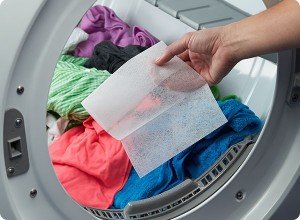Poisoned at the cash register
3 min read
Bisphenol A is an endocrine disruptor, which can mimic the body’s own hormones and may lead to negative health effects. Early development appears to be the period of greatest sensitivity to its effects, and some studies have linked prenatal exposure to later neurological difficulties.
Regulatory bodies have determined safety levels for humans, but those safety levels are currently being questioned or under review as a result of new scientific studies. A 2011 study that investigated the number of chemicals pregnant women are exposed to in the U.S. found BPA in 96% of women.
The latest episode in the American Chemical Society’s (ACS) award-winning “Global Challenges/Chemistry Solutions” podcast series discusses the discovery of bisphenol A (BPA) in 94 percent of thermal cash register receipts and describes how recycling of those receipts spreads BPA to paper napkins, toilet paper and other paper products.
Listen to the BPA podcast from the ACS.
In the podcast, Kurunthachalam Kannan, Ph.D., explains that manufacturers produce more than 8 billion pounds of BPA worldwide every year. Research links BPA with certain harmful health effects. BPA has been used in plastic water bottles, the lining of food cans and a variety of other products. But how much do non-food sources contribute to BPA exposure? BPA coats the surfaces of thermal receipts, where it acts as a developer for the printing dye. To see whether this source of BPA was a concern, the researchers analyzed hundreds of samples of thermal cash register receipts and 14 other paper types from the U.S., Japan, Korea and Vietnam.
They found BPA on 94 percent of all the receipts. The only receipts with that were BPA-free were those from Japan, which phased out this use of BPA in 2001. BPA was in most of the other types of paper products, with tickets, newspapers and flyers having the highest concentrations. But these levels still paled in comparison to BPA on receipts, which the study said are responsible for more than 98 percent of consumer exposure to BPA from paper.
The researchers estimate that receipts contribute about 33.5 tons of BPA to the environment every year in the U.S. and Canada. They note that handling of paper products can contribute up to 2 percent of the total daily BPA exposures in the general population, and that fraction can be much higher in occupationally exposed individuals.
Low-dose exposure in animals
| Dose (µg/kg/day) | Effects (measured in studies of mice or rats, descriptions (in quotes) are from Environmental Working Group)[132][133] |
Study Year |
| 0.025 | “Permanent changes to genital tract” | 2005[134] |
| 0.025 | “Changes in breast tissue that predispose cells to hormones and carcinogens” | 2005[135] |
| 1 | long-term adverse reproductive and carcinogenic effects | 2009[88] |
| 2 | “increased prostate weight 30%” | 1997[136] |
| 2 | “lower bodyweight, increase of anogenital distance in both genders, signs of early puberty and longer estrus.” | 2002[137] |
| 2.4 | “Decline in testicular testosterone” | 2004[138] |
| 2.5 | “Breast cells predisposed to cancer” | 2007[139] |
| 10 | “Prostate cells more sensitive to hormones and cancer” | 2006[140] |
| 10 | “Decreased maternal behaviors” | 2002[141] |
| 30 | “Reversed the normal sex differences in brain structure and behavior” | 2003[142] |
| 50 | Adverse neurological effects occur in non-human primates | 2008[57] |
| 50 | Disrupts ovarian development | 2009[89] |
The current U.S. human exposure limit set by the EPA is 50 µg/kg/day.






